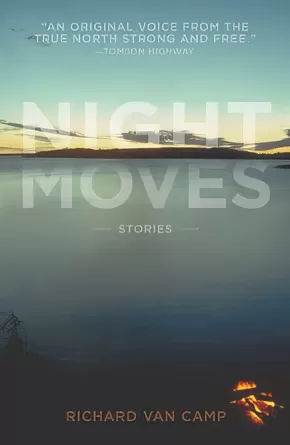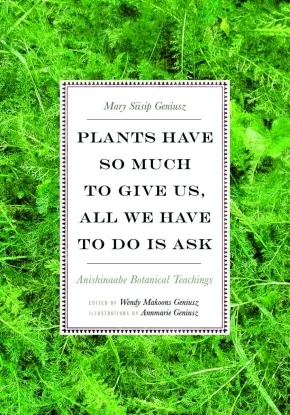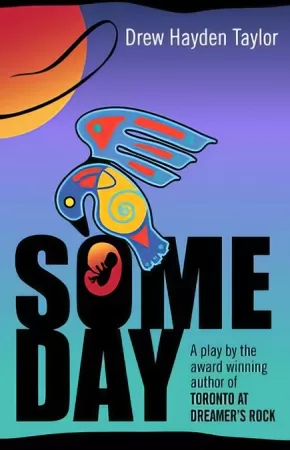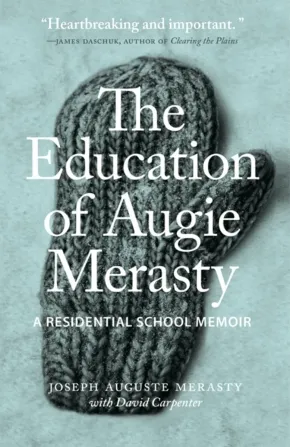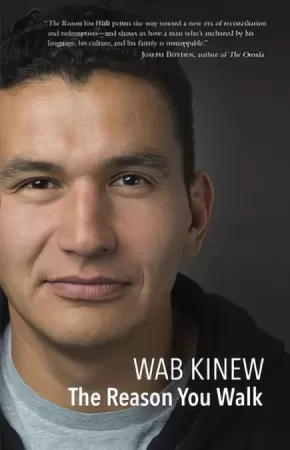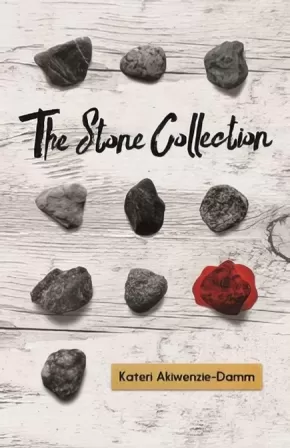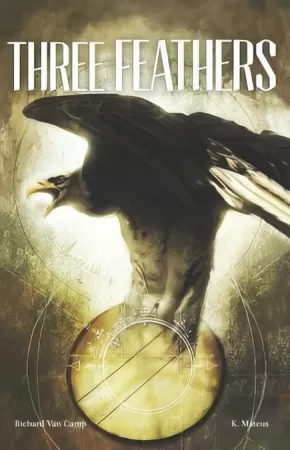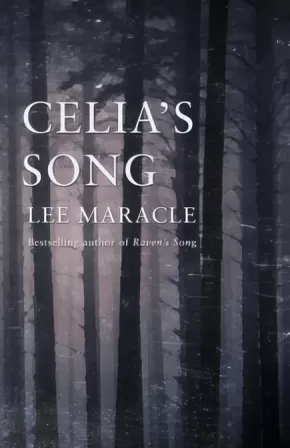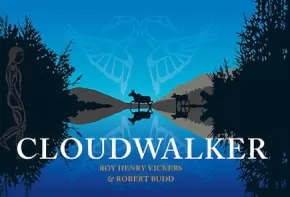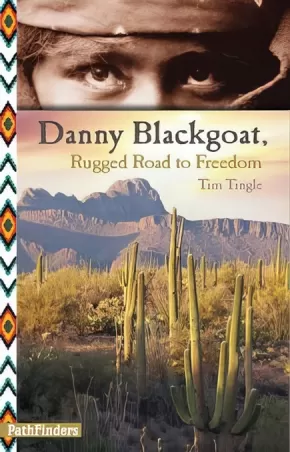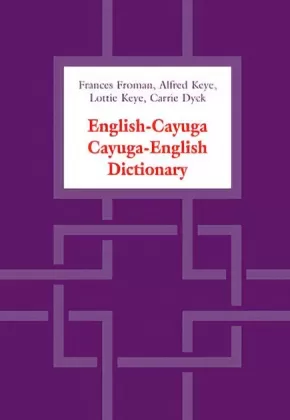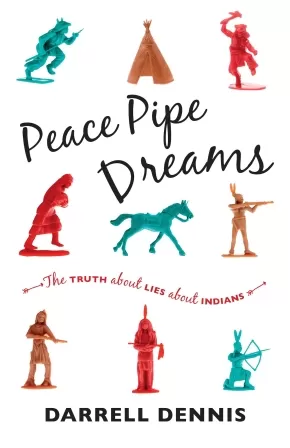
First Nations
511
-
525
of
653 Results;
Sort By
Go To
of 44
Night Moves
$19.95
Format:
Paperback
Text Content Territories:
Indigenous Canadian;
ISBN / Barcode: 9781927855232
Synopsis:
Synopsis:
As a window into the magic and medicine of the Northwest Territories, Richard Van Camp's fourth short story collection is hilarious and heartbreaking. A teenaged boy confesses to a vicious assault on a cross-dressing classmate; Lance tells the sensual story of becoming much closer to his wife's dear friend Juanita; while a reluctant giant catches up with gangsters Torchy and Sfen in a story with shades of supernatural and earthly menace.
Night Moves continues to explore the incredible lives of indigenous characters introduced in The Lesser Blessed, Angel Wing Splash Pattern, The Moon of Letting Go, and Godless but Loyal to Heaven. If this is your first time to Fort Simmer and Fort Smith, welcome. If it's another visit - come on in: we've left the lights on for you.
Plants Have So Much to Give Us, All We Have to Do Is Ask: Anishinaabe Botanical Teachings
$31.99
Artists:
Editors:
Format:
Paperback
Text Content Territories:
Indigenous Canadian; First Nations; Anishinaabeg;
Reading Level: N/A
ISBN / Barcode: 9780816696765
Synopsis:
Synopsis:
Mary Siisip Geniusz has spent more than thirty years working with, living with, and using the Anishinaabe teachings, recipes, and botanical information she shares in Plants Have So Much to Give Us, All We Have to Do Is Ask. Geniusz gained much of the knowledge she writes about from her years as an oshkaabewis, a traditionally trained apprentice, and as friend to the late Keewaydinoquay, an Anishinaabe medicine woman from the Leelanau Peninsula in Michigan and a scholar, teacher, and practitioner in the field of native ethnobotany. Keewaydinoquay published little in her lifetime, yet Geniusz has carried on her legacy by making this body of knowledge accessible to a broader audience.
Geniusz teaches the ways she was taught—through stories. Sharing the traditional stories she learned at Keewaydinoquay’s side as well as stories from other American Indian traditions and her own experiences, Geniusz brings the plants to life with narratives that explain their uses, meaning, and history. Stories such as “Naanabozho and the Squeaky-Voice Plant” place the plants in cultural context and illustrate the belief in plants as cognizant beings. Covering a wide range of plants, from conifers to cattails to medicinal uses of yarrow, mullein, and dandelion, she explains how we can work with those beings to create food, simple medicines, and practical botanical tools.
Plants Have So Much to Give Us, All We Have to Do Is Ask makes this botanical information useful to native and nonnative healers and educators and places it in the context of the Anishinaabe culture that developed the knowledge and practice.
Additional Information
344 pages | 7.00" x 10.00" | Paperback
Some Day
$12.95
Format:
Paperback
Text Content Territories:
Indigenous Canadian; First Nations; Anishinaabeg; Ojibway;
ISBN / Barcode: 9781927083345
Synopsis:
Synopsis:
Someday is a powerful play by award-winning playwright Drew Hayden Taylor. The story in Someday, though told through fictional characters and full of Taylor's distinctive wit and humour, is based on the real-life tragedies suffered by many Native Canadian families.
Anne Wabung's daughter was taken away by children's aid workers when the girl was only a toddler. It is Christmastime 35 years later, and Anne's yearning to see her now-grown daughter is stronger than ever.
When the family is finally reunited, however, the dreams of neither women are fulfilled.
The setting for the play is a fictional Ojibway community, but could be any reserve in Canada, where thousands of Native children were removed from their families in what is known among Native people as the "scoop-up" of the 1950s and 1960s. Someday is an entertaining, humourous, and spirited play that packs an intense emotional wallop.
Additional Information
142 pages | 5.50" x 8.50" | Paperback
The Education of Augie Merasty: A Residential School Memoir (HC) (9 in Stock)
$21.95
Format:
Hardcover
Text Content Territories:
Indigenous Canadian; First Nations; Cree (Nehiyawak);
ISBN / Barcode: 9780889773684
Synopsis:
Synopsis:
The Education of Augie Merasty offers a courageous and intimate chronicle of life in a residential school.
Now a retired fisherman and trapper, Joseph A. (Augie) Merasty was one of an estimated 150,000 First Nations, Inuit, and Metis children who were taken from their families and sent to government-funded, church-run schools, where they were subjected to a policy of "aggressive assimiliation."As Merasty recounts, these schools did more than attempt to mold children in the ways of white society. They were taught to be ashamed of their native heritage and, as he experienced, often suffered physical and sexual abuse.Even as he looks back on this painful part of his childhood, Merasty’s generous and authentic voice shines through.
Awards
- 2016 Burt Award Second Place Winner
Reviews
"At 86, Augie Merasty has been a lot of things: Father. Son. Outdoorsman. Homeless. But now he is a first-time author, and the voice of a generation of residential-school survivors.... The Education of Augie Merasty is the tale of a man not only haunted by his past, but haunted by the fundamental need to tell his own story... one of the most important titles to be published this spring." —Globe and Mail
"[Augie] wrote his memoir to show people the unbelievable atrocities suffered by so many Indigenous people and in the hope that others would come forward to tell their stories of what happened in the residential schools." —Eagle Feather News
"This book is so much bigger than its small size. It is a path to healing. We cannot change history, but we can acknowledge it, learn about it, and remember it." —Prairies North
"The Education of Augie Merasty might be a small book, but it carries a punch to it that all Canadian need to read and understand." —Rabble
"A truly extraordinary memoir by a truly extraordinary man." —Midwest Book Review
"Carpenter's introduction and afterword... allow us to come to better understand Augie's 'sometimes chaotic, sometimes heroic aftermath of his life,' as Carpenter describes his last decade. Where Augie focuses on physical scars, Carpenter's experiences with Augie illustrate the long-term impacts on his residential school experience. And with The Education of Augie Merasty, he helps Merasty--who could be any number of individuals we each pass on the street--find his voice." —Active History
"Unsettling and profound, and good." —Blacklock's Reporter
"In this book I have seen horror through eyes of a child." —James Daschuk, author of Clearing the Plains
"A story in which our entire nation has an obscure and dark complicity." —David Carpenter, co-author of The Education of Augie Merasty and author of The Gold and other books
Educator Information
The Canadian Indigenous Books for Schools list recommends this resource for Grades 9-12 English Language Arts and Social Studies.
Caution: Mature subject matter and descriptions of discrimination, sexual/physical violence, and substance abuse.
Additional Information
105 pages | 4.25" x 6.53" | Hardcover
The Reason You Walk
$22.00
Format:
Paperback
Text Content Territories:
Indigenous Canadian; First Nations; Anishinaabeg; Ojibway;
ISBN / Barcode: 9780143193555
Synopsis:
Synopsis:
When his father was given a diagnosis of terminal cancer, Winnipeg broadcaster and musician Wab Kinew decided to spend a year reconnecting with the accomplished but distant aboriginal man who'd raised him. The Reason You Walk spans the year 2012, chronicling painful moments in the past and celebrating renewed hopes and dreams for the future. As Kinew revisits his own childhood in Winnipeg and on a reserve in Northern Ontario, he learns more about his father's traumatic childhood at residential school. An intriguing doubleness marks The Reason You Walk, a reference to an Anishinaabe ceremonial song. Born to an Anishinaabe father and a non-native mother, he has a foot in both cultures. He is a Sundancer, an academic, a former rapper, a hereditary chief, and an urban activist. His father, Tobasonakwut, was both a beloved traditional chief and a respected elected leader who engaged directly with Ottawa. Internally divided, his father embraced both traditional native religion and Catholicism, the religion that was inculcated into him at the residential school where he was physically and sexually abused. In a grand gesture of reconciliation, Kinew's father invited the Roman Catholic bishop of Winnipeg to a Sundance ceremony in which he adopted him as his brother. Kinew writes affectingly of his own struggles in his twenties to find the right path, eventually giving up a self-destructive lifestyle to passionately pursue music and martial arts. From his unique vantage point, he offers an inside view of what it means to be an educated aboriginal living in a country that is just beginning to wake up to its aboriginal history and living presence.
Invoking hope, healing and forgiveness, The Reason You Walk is a poignant story of a towering but damaged father and his son as they embark on a journey to repair their family bond. By turns lighthearted and solemn, Kinew gives us an inspiring vision for family and cross-cultural reconciliation, and a wider conversation about the future of aboriginal peoples.
The Stone Collection
$18.95
Format:
Paperback
Text Content Territories:
Indigenous Canadian; First Nations; Anishinaabeg;
Grade Levels: University/College;
ISBN / Barcode: 9781553795490
Synopsis:
Synopsis:
In these 14 unique stories, Kateri Akiwenzie-Damm takes on complex and dangerous emotions, exploring the gamut of modern Anishinaabe experience. Through unforgettable characters, these stories—about love and lust, suicide and survival, illness and wholeness—illuminate the strange workings of the human heart.
Educator & Series Information
"In the Anishnaabe language and worldview, stones are alive, infused with life force or spirit. Although many of the stories are about loss, under that surface they are alive, celebrating the beauty and preciousness of life." —Kateri Akiwenzie-Damm
This book is part of The Debwe Series.
Recommended for Grade 12 students and adults.
Additional Information
150 pages | 5.50" x 8.50"
Three Feathers
$18.95
Artists:
Format:
Paperback
Text Content Territories:
Indigenous Canadian;
ISBN / Barcode: 9781553795360
Synopsis:
Synopsis:
Three young men—Flinch, Bryce, and Rupert—have vandalized their community and are sent by its Elders to live nine months on the land as part of the circle sentencing process. There, the young men learn to take responsibility for their actions and acquire the humility required to return home. But, when they do return, will they be forgiven for what they’ve done?
Three Feathers explores the power and grace of restorative justice in one Northern community and the cultural legacy that can empower future generations.
Three Feathers is the third title in The Debwe Series. Created in the spirit of the Anishinaabe concept debwe (to speak the truth), The Debwe Series is a collection of exceptional Aboriginal writings from across Canada.
Reviews
"Three Feathers is a graphic novel illustrated by stark, black and white images. Many of the frames have no captioning, inviting the reader to intuit the narrative. K. Mateus, the illustrator, makes imaginative use of Aboriginal symbols and motifs in this 48 page book; when Gabe is attacked, demonic figures shadow the background, and when Bryce rails at the members of the community sentencing circle, the image of an angry wildcat snarls behind him." - CM Magazine
Educator & Series Information
Grades 10-12 BC English First Peoples Resource for units on Childhood and Place-Conscious Learning.
Recommended for grades 9 to 12.
This book is part of The Debwe Series, which features exceptional Indigenous writings from across Canada.
This book is available in French: Trois Plumes
Additional Information
48 pages | 6.50" x 10.00"
Wisdom from our First Nations
$10.95
Format:
Paperback
Text Content Territories:
Indigenous American; Indigenous Canadian;
ISBN / Barcode: 9781927583555
Synopsis:
Synopsis:
In Indigenous cultures, elders serve as a bridge across time: they are connected to the past, they live in the present and they offer wisdom for the future. In these fascinating biographical essays, twelve First Nation and Native American elders share stories from their lives and tell what it was like to live in a time before television, cell phones and video games. Their stories explain how their humble childhoods shaped the adults they became and the lessons they share as elders. All the elders profiled work to ensure that their Native culture is passed down to members of their tribe. Settle in with this book and “listen” to the stories of these elders’ lives. As you take in their history, you just might gain wisdom that could make a difference in your own life.
Educator & Series Information
This book is part of the First Nations Series for Young Readers. Each book is a collection of biographies of First Nations, Métis, and Inuit women and men who are leaders in their fields of work, in their art, and in their communities.
For ages 9-14.
Additional Information
128 pages | 6.00" x 9.00"
Celia's Song
$22.95
Format:
Paperback
Text Content Territories:
Indigenous Canadian; First Nations; Nuu-chah-nulth (Nootka);
ISBN / Barcode: 9781770864511
Synopsis:
Synopsis:
Mink is a witness, a shape shifter, compelled to follow the story that has ensnared Celia and her village, on the West coast of Vancouver Island in Nu:Chahlnuth territory. Celia is a seer who - despite being convinced she's a little "off" - must heal her village with the assistance of her sister, her mother and father, and her nephews. While mink is visiting, a double-headed sea serpent falls off the house front during a fierce storm. The old snake, ostracized from the village decades earlier, has left his terrible influence on Amos, a residential school survivor. The occurrence signals the unfolding of an ordeal that pulls Celia out of her reveries and into the tragedy of her cousin's granddaughter. Each one of Celia's family becomes involved in creating a greater solution than merely attending to her cousin's granddaughter. Celia's Song relates one Nu:Chahlnuth family's harrowing experiences over several generations, after the brutality, interference, and neglect resulting from contact with Europeans.
Educator Information
Grade 11/12 English First Peoples resource for the unit Further Steps toward Reconciliation.
Additional Information
280 pages | 5.50" x 8.50"
Clay Pots and Bones (1 in stock) - ON SALE
$10.00 $14.95
Format:
Paperback
Text Content Territories:
Indigenous Canadian; First Nations; Mi'kmaq;
ISBN / Barcode: 9781927492819
Synopsis:
Synopsis:
The poetry of Clay Pots and Bones is Lindsay Marshall’s way of telling stories, of speaking with others about what things that matter to him. His heritage. His people. His life as a Mi’kmaw. For the reader, Clay Pots and Bones is a colourful journey from early days, when the People of the Dawn understood, interacted with and roamed the land freely, to the turbulent present and the uncertain future where Marshall envisions a rebirth of the Mi’kmaq. The poetry challenges and enlightens. It will, most certainly, entertain.
Additional Information
96 pages | 5.00" x 8.00"
Cloudwalker
$24.95
Format:
Hardcover
Text Content Territories:
Indigenous Canadian; First Nations; Gitxsan (Gitksan);
ISBN / Barcode: 9781550176193
Synopsis:
Synopsis:
Cloudwalker, describing the creation of the rivers, is the second in a series of Northwest Coast legends by Roy Henry Vickers and Robert Budd. Their previous collaboration, Raven Brings the Light (2013), is a national bestseller.
On British Columbia's northwest coast lies the Sacred Headwaters--the source of three of British Columbia's largest salmon-bearing rivers. These rivers are the source of life for all creatures in the area. But what gave life to the rivers themselves?
Astace, a young Gitxsan hunter, is intent on catching a group of swans with his bare hands. He is carried away by the birds' powerful wings and dropped in the clouds. With only a cedar box of water Astace wanders the clouds, growing weaker, stumbling and spilling the contents. When he finally returns to earth he discovers lakes, creeks, and rivers where there were none before. The Gitxsan rejoice at having him home, and name the new river they live alongside Ksien--"juice from the clouds."
Roy Henry Vickers' vibrant artwork, including 18 new prints, accompany this new retelling of an ancient story--readers of all ages will be captivated.
Educator & Series Information
This book is part of the Northwest Coast Legends series.
Other books in this series include:
Raven Brings the Light
Cloudwalker
Orca Chief
Peace Dancer
Recommended for ages 3 to 6.
Additional Information
40 pages | 12.00" x 8.25"
Danny Blackgoat: Rugged Road to Freedom
$12.95
Format:
Paperback
Text Content Territories:
Indigenous American; Native American; Navajo (Diné);
ISBN / Barcode: 9781939053053
Synopsis:
Synopsis:
This second volume of a three-part series continues the dramatic story of Danny Blackgoat, a Navajo teenager who, after being labeled a troublemaker, is taken prisoner during the Long Walk of 1864. Danny escaped from Fort Davis in volume one (Danny Blackgoat, Navajo Prisoner), but he must still face many obstacles in order to rescue his family and find freedom.
Whether it’s soldiers and bandits chasing him or the dangers of the harsh desert climate, Danny ricochets from one bad situation to the next,but his bravery doesn’t falter and he never loses faith.
Educator & Series Information
Like all PathFinders novels for reluctant teen readers, this contemporary story is by a Native American author, features a linear plot, and is written at a 4.0 to 4.5 reading level.
This is the second book in the Danny Blackgoat series, which is part of the PathFinders series. The PathFinders series of Hi-Lo (high interest, low readability) novels offers the following features:
• Indigenous teen protagonists
• Age appropriate plots
• 2.5 – 4.5 Reading Level
• Contemporary and historical fiction
• Indigenous authors
The PathFinders series is from an American publisher. Therefore, Indigenous terminology in the PathFinders books is not the same as Canadian Indigenous terminology. This prompts a useful teaching moment for educators in discussing appropriate terminology use in Canada. The recommended ages for books in the PathFinders series are 12-16.
Additional Information
144 pages | 4.50" x 7.00"
English-Cayuga/Cayuga-English Dictionary
$81.00
Format:
Paperback
Text Content Territories:
Indigenous Canadian; First Nations; Haudenosaunee (Iroquois); Cayuga;
Reading Level: N/A
ISBN / Barcode: 9781442627093
Synopsis:
Synopsis:
The first comprehensive lexicographic work on Cayuga, an Iroquoian language spoken in southern Ontario at Six Nations of the Grand River, this dictionary, combines the work of Dyck, a professor of linguistics, and Froman, Keye, and Keye, all Cayuga language teachers at Six Nations. It contains over 3000 entries, including 1000 verb forms and many nouns never before printed; extensive cross-referencing, thematic appendices that highlight cultural references and provide 1600 further entries, and a short grammatical sketch complete this accomplished work.
Entries in the main dictionary are organized by bases, which will make the dictionary especially helpful to those learning Cayuga as a second language. The dictionary's accuracy and extensiveness will make it an indispensable reference not only to the Cayuga speaker and student, but also to other Iroquoian speakers, linguists, anthropologists, and historians of Indigenous Peoples.
Produced under the auspices of the Sweetgrass First Nations Language Council Inc.
Reviews
"The first extensive dictionary of Cayuga, this benchmark work documents the language in 3,000 entries and in word lists organized thematically in appendixes ... A valuable tool for linguists of Iroquoian languages and anthropologists, as well as those who study the Cayuga language. Summing up: Highly recommended."— R. Hanson, Choice
"A major milestone in Iroquoian studies and an extremely important tool in the preservation of the Cayuga language."— Blair A. Rudes, Department of English, University of North Carolina at Charlotte
Additional Information
786 pages | 6.88" x 9.73" | Paperback
Lightfinder (3 in stock, in reprint)
$22.00
Artists:
Format:
Paperback
Text Content Territories:
Indigenous Canadian; First Nations; Cree (Nehiyawak);
ISBN / Barcode: 9780986874079
Synopsis:
Synopsis:
Lightfinder is a Young Adult fantasy novel about Aisling, a young Cree woman who sets out into the wilderness with her Kokum (grandmother), Aunty and two young men she barely knows.
They have to find and rescue her runaway younger brother, Eric. Along the way she learns that the legends of her people might be real and that she has a growing power of her own. The story follows the paths of Aisling and Eric, siblings unwittingly thrust into a millennia-old struggle for the future of life on earth. It deals with growing up, love and loss, and the choices life puts in our path. Love and confusion are in store, as are loss and pain. Things are not always what they seem and danger surrounds them at every turn. Will Raven's mysterious purposes prevail? With darkness closing in how will they find the light to guide them? Will Aisling find Eric in time?
Set in the Alberta landscape with references to real-world challenges faced by youth today, Lightfinder has proven to be a hit with young adults and adults alike. Lightfinder spent over 60 days in Amazon's Top 100 Sci-Fi and Fantasy novels in 2014.
Awards
- Winner of the 2015 Burt Award for First Nations, Métis and Inuit Literature!
Reviews
"With an artist's eye and a storyteller's soaring imagination, Aaron Paquette has written a page-turner. I found myself rooting hard for Aisling, Eric and their beloved Kokum. This book is a hugely engaging cautionary tale: the stakes are high if we keep giving in to our appetites. But there is great light in Lightfinder. Congratulations, Aaron, on this strong debut." - Shelagh Rogers
Educator Information
Recommended Ages: 11-18
Additional Information
240 pages | 6.00" x 9.00"
Peace Pipe Dreams
$22.95
Format:
Paperback
Text Content Territories:
Indigenous Canadian; Métis; Inuit; First Nations;
ISBN / Barcode: 9781771000406
Synopsis:
Synopsis:
In 2015-2016, Peace Pipe Dreams was the award recipient for First Nation Communities Read.
Darrell Dennis is a stereotype-busting, politically incorrect Native American/Aboriginal/Shuswap (Only he's allowed to call himself an "Indian." Maybe. Under some circumstances). With a large dose of humour and irreverence, he untangles some of the truths and myths about First Nations: Why do people think Natives get free trucks, and why didn't he ever get one? Why does the length of your hair determine whether you’re good or bad? By what ratio does the amount of rain in a year depend on the amount of cactus liquor you consume?
In addition to answering these burning questions, Dennis tackles some tougher subjects. He looks at European-Native interactions in North America from the moment of first contact, discussing the fur trade, treaty-signing and the implementation of residential schools. Addressing misconceptions still widely believed today, Dennis explains why Native people aren't genetically any more predisposed to become alcoholics than Caucasians; that Native religion doesn't consist of worshipping rocks, disappearing into thin air, or conversing with animals; and that tax exemptions are so limited and confusing that many people don't even bother.
Employing pop culture examples, personal anecdote and a cutting wit, Darrell Dennis deftly weaves history with current events to entertain, inform and provide a convincing, readable overview of First Nations issues and why they matter today.
Additional Information
224 pages | 5.65" x 8.52"
Sort By
Go To
of 44

